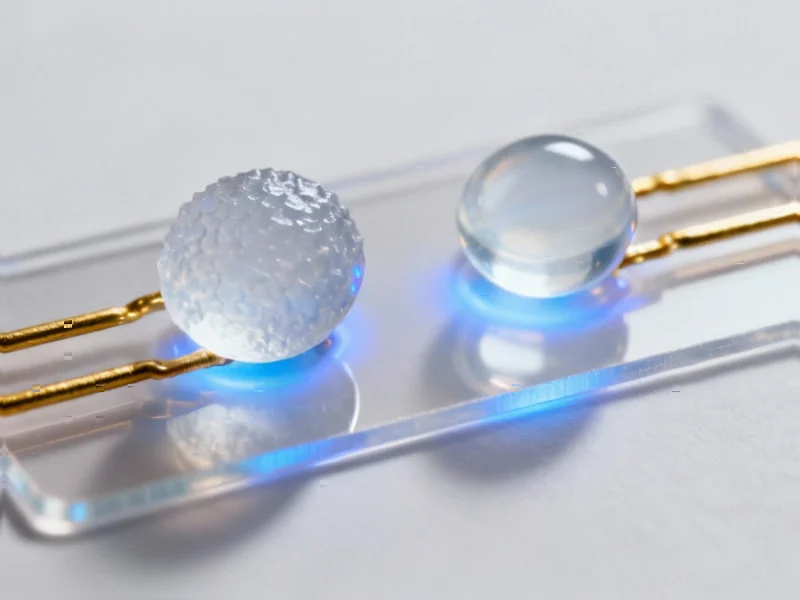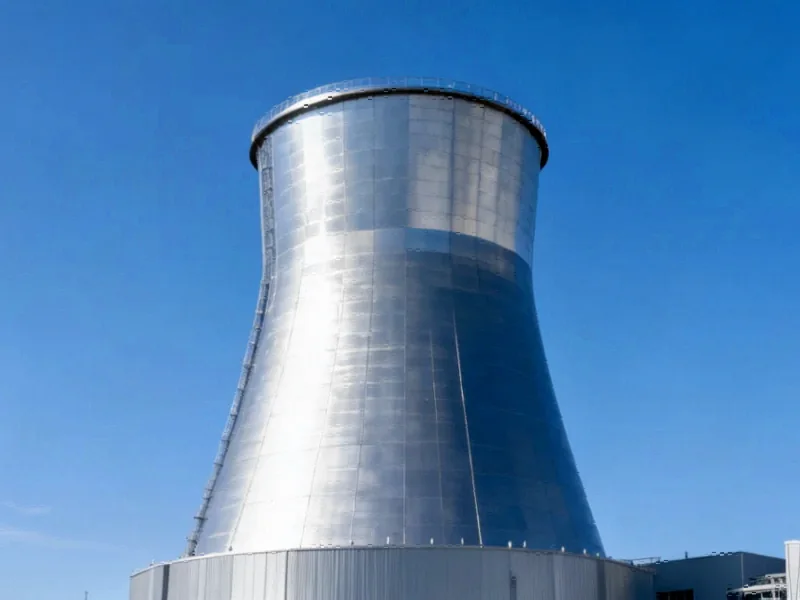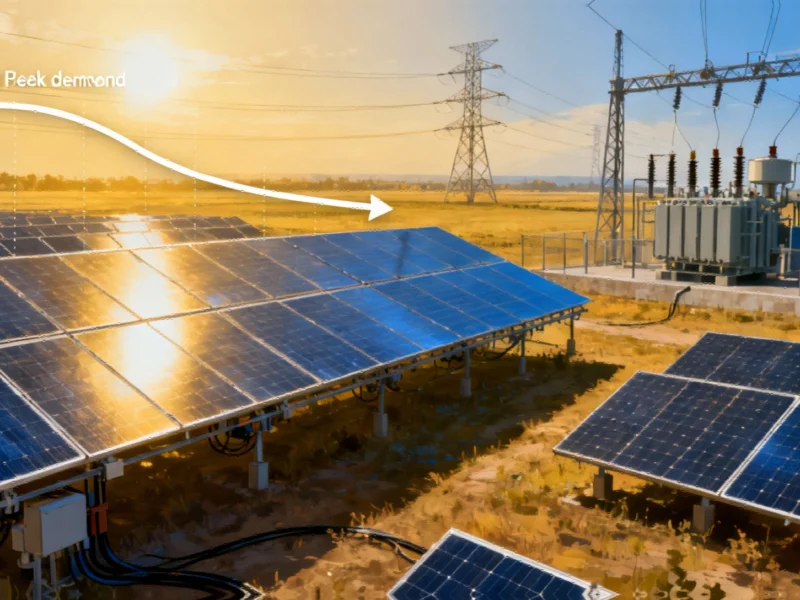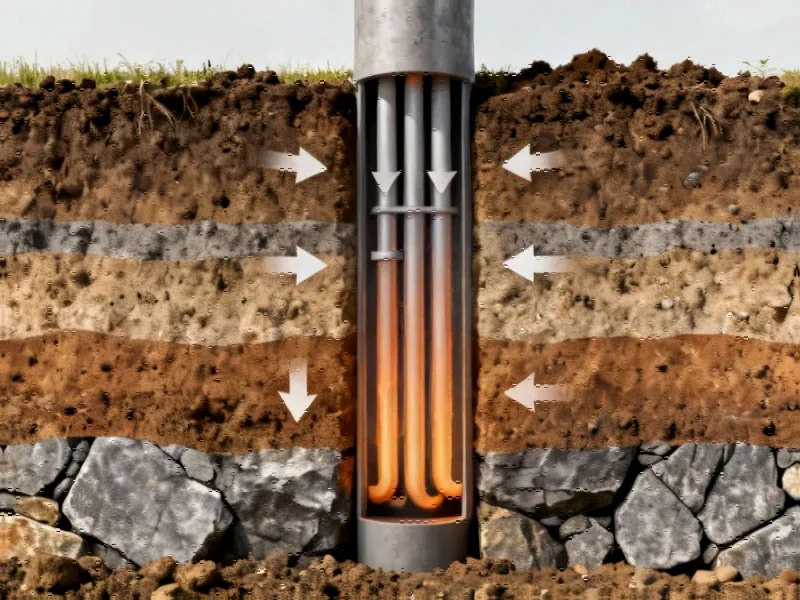Revolutionary Light-Harvesting Technology
Researchers have developed a groundbreaking photoenergy harvesting system using ammonium molybdate soft hydrogel drops that demonstrates unprecedented capability to maintain electrical output even after light removal. The Photonic-Activated Photosystem Hydrogel (PAPH) represents a significant departure from conventional photovoltaic technology, combining redox chemistry with ionic gradient principles to create a more versatile energy harvesting platform. This innovation opens new possibilities for sustained energy generation in various industrial and computing applications where continuous power availability is critical.
Novel Dual-Hydrogel Architecture
The PAPH prototype features an ingenious two-droplet system comprising negative ammonium molybdate hydrogel (n-gel) and positive hydrogel (p-gel) droplets deposited between gold electrodes on polyethylene terephthalate substrates. The system forms a stabilized, support-free structure within minutes, with SEM analysis revealing distinct surface characteristics between the components. The n-gel’s rougher surface, attributed to ammonium molybdate coupling, plays a crucial role in the device’s photochemical performance. This architectural innovation represents one of many related innovations in materials science that are transforming energy technology.
Dual-Mechanism Energy Generation
Under 365 nm light irradiation, the system initiates a sophisticated photochemical process where molybdate ions within the n-gel generate negative ions, creating a reversible redox pair. The standard electrode potential difference reduces the counter electrode’s potential, yielding photo-redox potential energy. Simultaneously, ion accumulation on the n-gel side modifies the ionic gradient, causing anion migration from high to low concentration regions and releasing ion gradient potential energy. The higher solvation entropy of ions creates a steeper potential gradient, with both mechanisms contributing to the system’s electrical output. This dual-mechanism approach aligns with broader industry developments in multi-source energy harvesting.
Sustained Power Without Continuous Illumination
A remarkable feature of the PAPH is its ability to maintain millivolt-range open-circuit potential for over an hour after light removal. The voltage decline follows two distinct processes: initial ionic gradient diffusion and subsequent redox pair stabilization. The system’s design restricts ion movement, extending the redox pair’s lifetime and enabling sustained voltage output. This persistent energy generation capability makes the technology particularly relevant for applications requiring uninterrupted power supply, similar to other recent technology advances in reliable energy systems.
Performance Characteristics and Optimization
Under continuous ultraviolet illumination (365 nm, 9.9 mW cm⁻²), the PAPH generates approximately 250 mV open-circuit voltage within 200 seconds, reaching a plateau indicative of dynamic equilibrium. The short-circuit current rises rapidly to ~200 nA within the same period, then continues increasing linearly due to accumulated charge discharge characteristics. After 900 seconds of activation, output power density reaches ~387 mW m⁻², with internal resistance changes confirming increased charged particle concentration. The system’s performance varies with light power density, achieving optimal steady-state gain at 9.9 mW cm⁻² while maintaining efficiency even at lower power levels. These performance metrics demonstrate the technology’s potential alongside other market trends in advanced energy solutions.
Experimental Validation and Mechanism Confirmation
Comprehensive testing confirmed the theoretical framework, with ionic diffusion contributing 36.1% to voltage gain and redox mechanisms accounting for 50.1%. The gelatin matrix influence represented 13.8%, with only 4.43% error between theoretical predictions and experimental results. Raman spectroscopy analysis revealed asymmetric Mo-O vibration and enhanced hydroxyl/hydrogen radical presence, further validating the proposed mechanism. The research builds upon previous work in soft hydrogel energy harvesting, demonstrating significant advances in sustained power generation capability.
Industrial Applications and Future Potential
The PAPH technology offers compelling advantages for industrial computing and autonomous systems where traditional power sources face limitations. The ability to generate and store energy simultaneously, coupled with sustained output after light removal, positions this innovation as a potential solution for remote sensors, IoT devices, and embedded systems. As industries worldwide undergo strategic realignment toward sustainable technologies, such energy harvesting systems could play a crucial role in powering the next generation of industrial computing infrastructure.
The continued refinement of photochemical energy harvesting systems represents a significant step toward more sustainable and reliable power solutions for industrial applications. With their unique combination of immediate response and sustained output, hydrogel-based energy harvesters could fundamentally transform how we power distributed computing systems and remote monitoring equipment.
This article aggregates information from publicly available sources. All trademarks and copyrights belong to their respective owners.
Note: Featured image is for illustrative purposes only and does not represent any specific product, service, or entity mentioned in this article.



